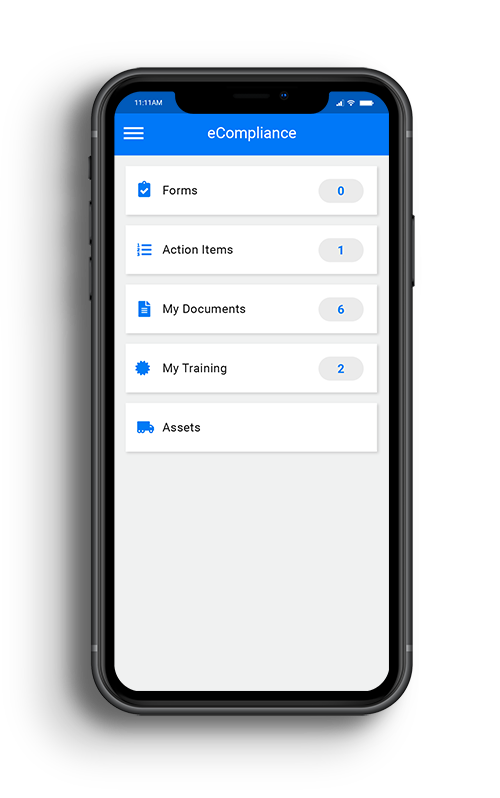
Share this Post
PUBLISHED
December 8, 2021
READ TIME
5 Minutes
WRITTEN BY
![]() Dina Adlouni
Dina Adlouni
Dina is the resident Content Writer at EcoOnline North America . When she’s not writing about health and safety, you’ll find her enjoying a cup of tea while watching her favorite sitcom.
DART Incident Rate & Calculation
An organization’s DART rate is an important indicator of the strength of their safety program and performance. As an essential metric for the Occupational Safety and Health Administration (OSHA), DART incident rates can help keep companies within high-risk industries compliant and determine workers’ compensation costs.
Join us as we discuss what a DART incident rate is, the steps to calculate it, and how you can lower your DART incident rate to create a safer work environment and protect the workforce.
What is DART Incident Rate
First, let’s start off by defining exactly what is a DART incident rate. DART stands for Days Away, Restricted, or Transferred. This refers to how many injuries or illnesses on-site lead to workers taking time off, being restricted to certain tasks, or transferred to another role. This OSHA safety metric illustrates the safety of the organization that year and can be a factor in determining whether an OSHA inspector visits your site.
How to Calculate DART Incident Rate
At this point, you might be thinking what is the DART incident rate formula? Have no fear! We’ve got you covered.
To calculate an organization’s DART incident rate, simply add up the number of recordable injuries or illnesses which led to days away, restricted, or transferred and multiply it by 200,000. Why 200,000? 200,000 represents forty hours a week that 100 employees would work for 50 weeks during one year. Once this number is calculated, divide it by the number of hours all employees worked.

For example, if a small construction company had 20 work loss cases last year and the number of hours worked was 2,424,705, then the company’s DART rate would be 1.65 (the lower the better). With this data, you can compare your company’s DART performance to the industry average. In construction, the average was reported to be 1.8.
Why is it Important to Reduce Your DART Incident Rate
Having a low DART incident rate is essential as it is an important metric that is sent to OSHA annually. Finding ways to reduce it so it is below the industry average is a key part of strengthening your safety program and culture.
Why is it Important
This metric is of the utmost importance as it can help you avoid financial losses such as:
Hefty fines: Your DART rate not only helps to illustrate the safety performance of the organization, but can also be a good indicator of how compliant you are and whether or not you will be inspected. If violations are detected during the inspection, this could lead to hefty fines or other penalties. Not to mention the time lost and taken away from operations, as a result of a surprise inspection.
Loss of credibility and business opportunities: Organizations want to work with companies who have strong safety records. One indication of that is your DART incident rate, which may be requested to ensure compliance of the business. A poor DART incident rate could lead to a loss of credibility and less opportunities for bids/tenders within your industry.
High Workers’ Compensation Claims: High DART rates can also result in high workers’ compensation claims and costs. If workers are experiencing several injuries or illnesses on-site which are severe enough to result in days away, restricted, or transferred, then medical expenses and insurance premiums can be costly. Working in an environment which may be seen as unsafe by the workforce, may also result in higher turnover rates, lower employee morale, and a possible labor shortage.
How to Reduce DART Rate
Creating a safer workplace with low injury and illness rates can be accomplished with the right attitudes and practices in place, including efforts to:
Strengthen your safety culture: Having a strong safety culture in place, where the workforce and all team members are dedicated and invested in safety and its value is a pillar of any safe workplace. This can be cultivated with the help of senior leadership commitment, the inclusion, recognition, and empowerment of the workforce, as well as regular safety meetings and reminders throughout the organization.
Check out our whitepaper, 5 Steps to a Strong Safety Culture, to learn more.
Stay on top of safety metrics: By staying up to date with key safety metrics and performance, EHS professionals can quickly get to the root cause of certain risks and hazards and mitigate them quickly. Metrics such as total recordable injury frequency (TRIF), total recordable incident rate (TRIR), and lost time injury frequency rate (LTIFR), are just some of the performance metrics that safety leaders can focus on to stay ahead of injuries and incidents on-site.
Check out our whitepaper, How to Convert Safety Data to Actionable Insights, to learn more.
How EcoOnline Can Help
EcoOnline can help you effectively reduce incidents and injuries at your organization with our suite of safety solutions. With a proper digital solution in place, EHS professionals can simplify safety and enjoy myriad benefits such as:
- Centralized data and information to easily spot gaps in your safety program
- Streamlined communication with automated notifications and alerts to complete corrective actions to prevent incidents
- Dynamic dashboards to identify trends and patterns in safety data
- Higher participation and engagement rates from the workforce empowered with a mobile application
- And much more
Speak to one of our safety experts today to find out more about how we can help support your needs in employee and asset safety, incident management, compliance, reporting and analytics, and more.
Learn How You Can Get EcoOnline North America
Complete this form and one of our safety experts will be in touch.

